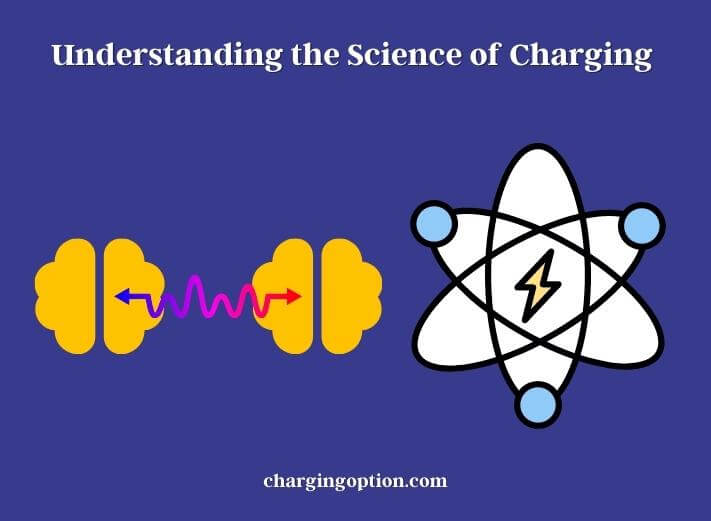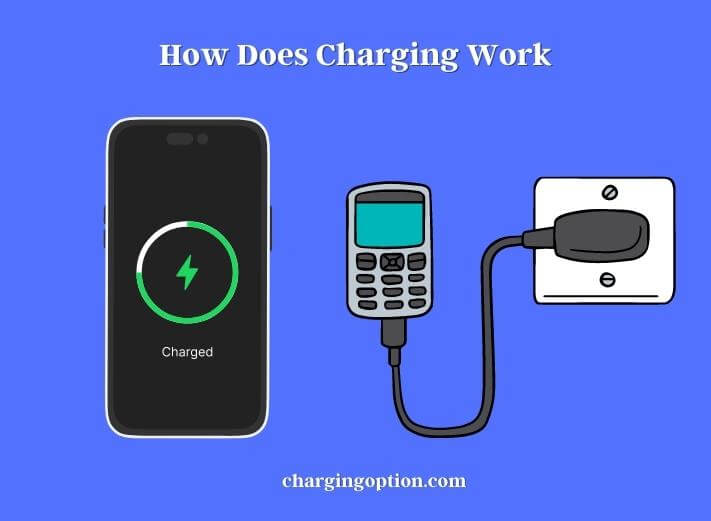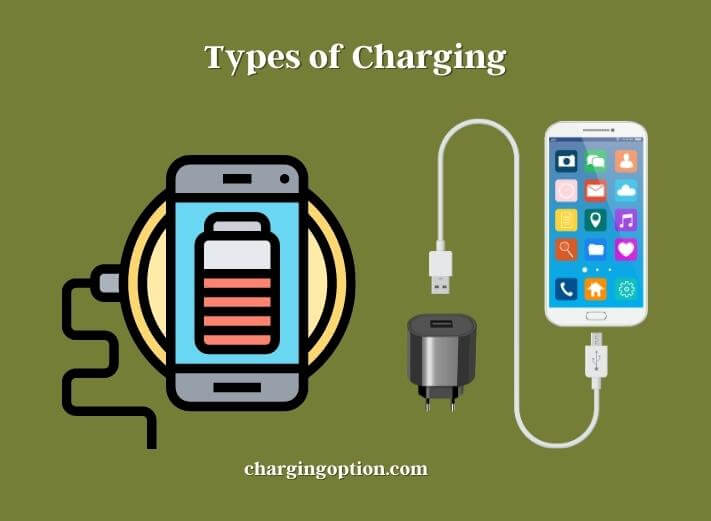Charging has become an indispensable part of our daily lives. Whether it’s charging our smartphones, laptops, or electric vehicles, we rely on charging to power our devices and stay connected. Many of us may not understand the science behind this process.

Electricity, the flow of electric charge, is at the heart of charging. The components of an electrical circuit, such as voltage, current, and resistance is crucial to understanding how charging works. Furthermore, different devices have different charging requirements, depending on their battery chemistry and size. Charging protocols and standards also play a significant role in the charging process, affecting the speed and efficiency of charging and the compatibility between devices.
Charging safety is a critical aspect of charging that cannot be overlooked. Charging can be dangerous if not done correctly and can lead to accidents such as overcharging, overheating, and short circuits. Therefore, it is essential to follow safe charging practices and guidelines to ensure that we charge our devices safely and efficiently.
How Does Charging Work?
Charging refers to the process of replenishing the energy stored in a battery or other electrical device. When a device is plugged into a power source, electricity flows from the source into the device, which then converts the electrical energy into chemical energy and stores it in the battery.
The charging process is controlled by a charging circuit, which regulates the flow of electricity into the battery to prevent overcharging or damage. The charging circuit monitors the battery’s voltage and current levels to ensure that the charging process is carried out safely and efficiently.

There are several types of charging methods, including trickle charging, fast charging, and wireless charging. Trickle charging is a slow and steady charging process that is commonly used for maintaining the battery’s charge level over an extended period of time. Fast charging, on the other hand, utilizes a higher voltage and current to quickly recharge a battery in a shorter amount of time. This method is commonly used for electronic devices and electric vehicles. Wireless charging, as the name suggests, allows for the transfer of energy to a battery without the need for physical connections. This technology is becoming increasingly popular in various industries, including industrial robot charging solutions. These solutions offer efficient and convenient ways to keep robots powered and operational without the need for manual intervention.
Fast charging, on the other hand, is a more rapid charging process that can charge a battery in a matter of hours or even minutes. Wireless charging uses an electromagnetic field to transfer energy from the charging pad to the device without the need for a physical connection.
The charging process is an essential part of using any electronic device that requires a battery or electrical power. How charging works can help you to use your devices safely and effectively while ensuring that they are always ready to use when you need them.
Types of Charging
There are several types of charging, each with its own characteristics and applications. The most common types of charging are wired charging, wireless charging, and fast charging.
Wired Charging
Wired charging is the most traditional and widely used type of charging. It involves connecting the device to a power source using a cable. The power source can be a wall socket, a USB port, or a power bank. Wired charging is generally slower than wireless charging, but it is more reliable and efficient. It is also more widely available and compatible with a broader range of devices.

Wireless Charging
Wireless charging is a relatively new technology that eliminates the need for cables. It uses magnetic induction to transfer power wirelessly between the charging pad and the device’s battery. The charging pad generates an electromagnetic field, which induces an electric current in the device’s receiver coil, charging the battery.
Wireless charging is more convenient than wired charging, as it eliminates the need for cables and connectors. It is generally slower and less efficient than wired charging. Moreover, wireless charging requires specific hardware, and not all devices are compatible with wireless charging.
Fast Charging
Fast charging is a technology that allows devices to charge at a much faster rate than standard charging. It achieves this by increasing the amount of current supplied to the device’s battery. The higher current increases the rate at which the battery charges, allowing the device to charge in a shorter time.
Fast charging is available on many smartphones and other devices, and it can significantly reduce charging times. Fast charging can generate more heat, which can reduce the battery’s lifespan if used excessively.
Charging Devices and Batteries
Different devices have different charging requirements, depending on their battery chemistry and size. Charging a device with the wrong voltage or current can damage the battery or even cause a fire hazard. It is essential to understand the charging requirements of your device and use the appropriate charger and cable.
Lithium-ion batteries are the most common type of battery used in portable devices. They have a high energy density, which means they can store a large amount of energy in a small size. Lithium-ion batteries also have a long lifespan and can be recharged multiple times. However, they require careful charging to prevent overcharging and overheating, which can damage the battery and reduce its lifespan.
To charge a device with a lithium-ion battery, it is essential to use a charger that matches the device’s voltage and current requirements. Most devices come with a charger and cable, which are specifically designed for the device. Using a third-party charger or cable can be risky and may damage the battery or the device.
It is essential to avoid overcharging the battery, as this can lead to overheating and damage to the battery. Most devices have built-in safeguards that prevent overcharging, such as automatically shutting off when the battery is fully charged. It is also advisable to unplug the charger once the device is fully charged to prevent overcharging.
Charging Protocols and Standards
Charging protocols and standards define the rules and guidelines for charging devices safely and efficiently. They ensure compatibility between different devices and chargers and provide a consistent user experience. The most common charging protocols and standards are USB Power Delivery, Qualcomm Quick Charge, and Apple Fast Charging.
USB Power Delivery
USB Power Delivery (USB-PD) is a fast-charging protocol that uses USB Type-C cables and connectors. It can deliver up to 100 watts of power and supports multiple voltage and current levels, depending on the device’s requirements. USB-PD is a flexible and versatile standard that can charge a wide range of devices, from smartphones to laptops.
Qualcomm Quick Charge
Qualcomm Quick Charge is a fast-charging technology used in smartphones and other devices that use Qualcomm Snapdragon processors. It uses a proprietary charging protocol that can deliver up to 100 watts of power and supports multiple voltage and current levels. Quick Charge can charge compatible devices up to four times faster than standard charging.
Apple Fast Charging
Apple Fast Charging is a fast-charging protocol used in Apple devices, such as iPhones and iPads. It uses a proprietary charging protocol that can deliver up to 18 watts of power and requires a USB Type-C to Lightning cable and a compatible charger. Apple Fast Charging can charge compatible devices up to 50% in just 30 minutes.
There are several industry standards that define the rules and guidelines for charging devices safely and efficiently. The most common standards are the USB Implementers Forum (USB-IF), the Wireless Power Consortium (WPC), and the International Electrotechnical Commission (IEC).
Charging Safety
Charging devices and batteries can be hazardous if not done properly. Improper charging can lead to overheating, short circuits, and even fires. Therefore, it is essential to follow some safety guidelines when charging devices and batteries.
Use the Right Charger and Cable
Using the wrong charger or cable can damage the battery or the device and increase the risk of overheating and fire. It is essential to use the charger and cable that comes with the device or a compatible one that meets the device’s charging requirements. Using third-party chargers and cables can be risky and may not provide optimal charging performance.
Avoid Overcharging
Overcharging a battery can lead to overheating, short circuits, and damage to the battery. Most devices have built-in safeguards that prevent overcharging, such as automatic shutoff when the battery is fully charged. It is essential to unplug the charger once the device is fully charged to prevent overcharging.
Avoid Charging in Extreme Temperatures
Exposing the device to high temperatures while charging can damage the battery and increase the risk of overheating and fire. It is essential to avoid charging the device in direct sunlight or near a heat source. Similarly, charging the device in cold temperatures can also affect the battery’s performance.
Avoid Charging Wet Devices
Charging a wet device can increase the risk of short circuits and damage to the battery. It is essential to dry the device thoroughly before charging it. Similarly, it is advisable to avoid charging the device in humid conditions or near water sources.
Don’t Charge Overnight or Unattended
Leaving the device charging overnight or unattended can increase the risk of overheating and fire. It is essential to monitor the device while it is charging and unplug it once it is fully charged.
How Does the Charging Mechanism Work in Electric Devices like Shavers?
The charging mechanism in electric devices like shavers, such as a Remington shaver, works by utilizing a power source to send electric current to the device’s battery. This allows the battery to store energy, which can then be used to power the shaver for cordless use. If you need to learn how to fix a noncharging Remington shaver, consult the device’s manual or seek professional assistance.
How Does Understanding the Science of Charging Help in Mastering Charging Etiquette?
The science of charging is crucial in mastering charging etiquette guidelines. Being aware of battery capacity, charging speed, and proper plug-in procedures can help prevent unnecessary delays and inconvenience for others. Adhering to these guidelines ensures a smooth and efficient charging process for everyone involved.
How Does the Science of Charging Relate to Understanding Charging Circuits?
The basics of charging circuits is essential to grasp the science of charging. Charging circuits dictate how electric current is delivered to rechargeable devices. In order to comprehend the process of charging, it is important to have a solid understanding of the basics of charging circuits.
What Scientific Methods Can I Use to Speed Up the Charging Process?
When it comes to quick charging tips, there are a few scientific methods that can help speed up the charging process. One method is using a higher voltage charger, which can increase the rate at which the battery charges. Utilizing fast charging technology can also significantly decrease charging time.
How Do Electric and Magnetic Fields Affect the Science of Charging?
Electric fields primer plays a critical role in the science of charging. When an electric field is applied, it can influence the movement of charged particles, leading to the transfer of electric charge. Magnetic fields can also impact charging by inducing an electric current. These fields is crucial for advancing charging technology.
How Does Ohm’s Law Relate to the Science of Charging?
When it comes to the science of charging, understanding ohm’s law basics is crucial. Ohm’s law relates directly to the charging process, as it explains the relationship between voltage, current, and resistance. By applying this principle, one can calculate the optimal charging conditions for different electronic devices.
Can a Trickle Charger Help Prevent Freezing in a Car Battery?
A trickle charger can play a crucial role in keeping a battery from freezing during cold weather. By maintaining a constant low-level charge, a trickle charger helps prevent the battery from losing its power, which in turn reduces the likelihood of it freezing in extremely low temperatures.
Last Assumption
Charging devices and batteries are essential in our daily lives, and understanding the science of charging can help us charge our devices safely and efficiently. We have discussed the basics of electricity, the types of charging, charging devices and batteries, charging protocols and standards, and charging safety.
The basics of electricity help us understand how charging works and the importance of voltage, current, and resistance in charging. We have also discussed the different types of charging, such as wired, wireless, and fast charging, and their advantages and disadvantages.
Charging devices and batteries require careful attention to prevent hazards and ensure optimal charging performance. We have discussed the importance of using the right charger and cable, avoiding overcharging, extreme temperatures, wet conditions, and charging unattended.
Charging protocols and standards define the rules and guidelines for charging devices safely and efficiently. The charging protocols and standards of your device can help you choose the right charger and cable and ensure safe and efficient charging.
If you want to know Can You Buy a Vuse Charger Separately? Click here to know the answer.
